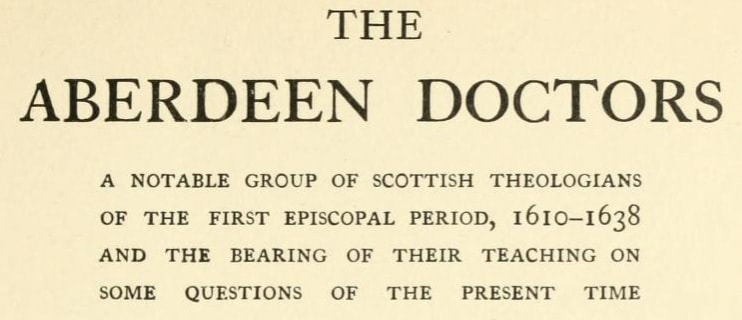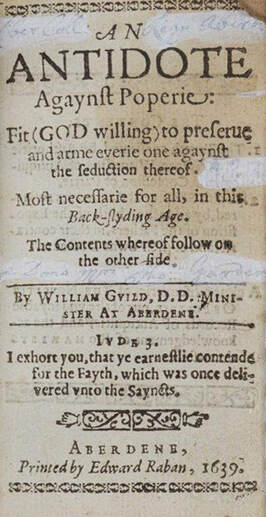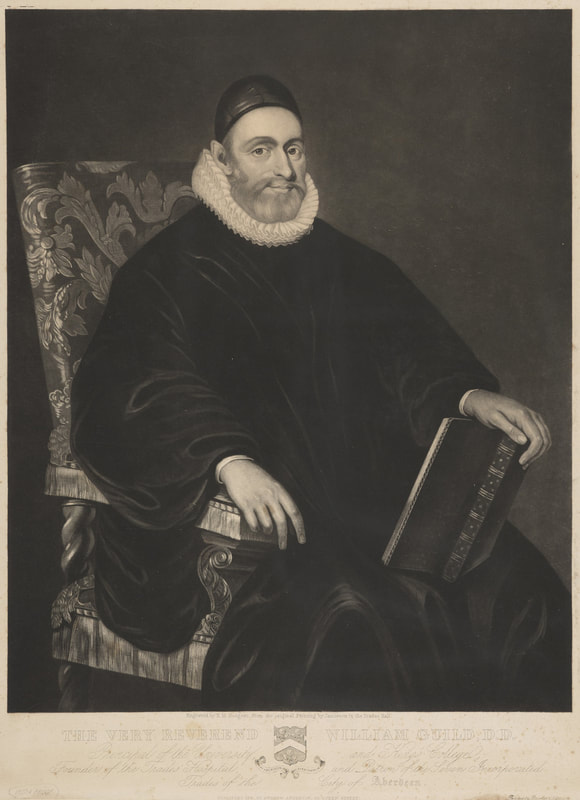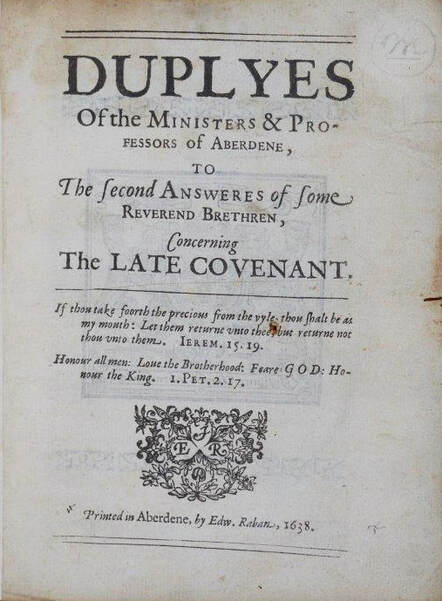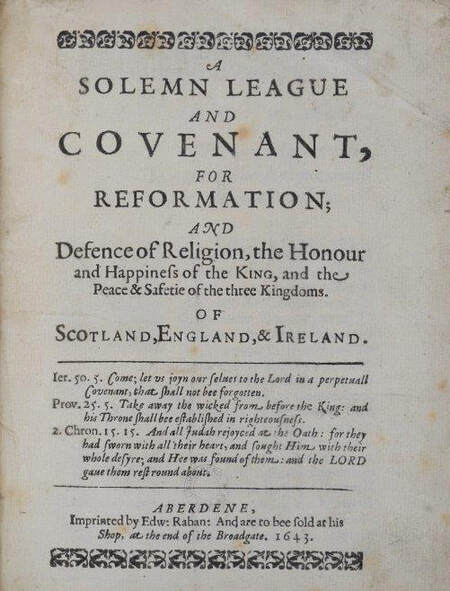A T I M E O F T U R M O I L
THE SOLEMN LEAGUE AND NATIONAL COVENANT
Much of Edward Raban’s life and work played out against the backdrop of the enormous social, political and, above all, religious upheavals of the seventeenth century. It is ironic that a man believed to have been associated with the printing of Calderwood’s Perth Assembly volume in Leiden in 1619 should end up closely associated with the ‘Aberdeen Doctors’ who were marked out for their strong adherence to the Articles of Perth and belief in Episcopacy. In this Raban, was clearly pragmatic; they were the pre-eminent citizens of his adopted home and from them and their associates came much of Raban’s printing work.
|
The Aberdeen Doctors were six distinguished divines working at King’s College or Marischal College. All were in opposition to the National Covenant which sought Presbyterian forms of church government and the removal of episcopacy. Raban had close connections with all of this circle.
|
Who were the Aberdeen Doctors?
|
|
In July 1638 Covenanting leaders, including the Earl of Montrose and Alexander Henderson visited Aberdeen. They were met by the six Aberdeen Doctors who questioned and queried elements of the Covenant which they considered illegal and against obedience they had sworn at their ordinations. John Forbes was deprived of his chair and forced from his official residence. The Solemn League and Covenant was sanctioned by both General Assembly and Parliament in 1643; all adults had to swear on it on pain of confiscation. Failure to do so would lead, in addition to confiscation, to being declared an enemy of God, King and Country. Forbes considered the Solemn League more objectionable that the Covenant and had no alternative but to leave the country. He spent the next two years in the Netherlands.
|
I cannot profess what my conscience condemns”. |
Raban walked a political and religious tightrope at this time. In 1638, he printed ‘Duplyes of the Ministers and Professors of Aberdene’ (left) – the volume of criticism of the Covenant. Duplyes meaning a defender’s rejoinder. In 1643, however, Raban was obliged to print that very same ‘Solemn League and Covenant’. Click on the images below to learn more about these volumes.

